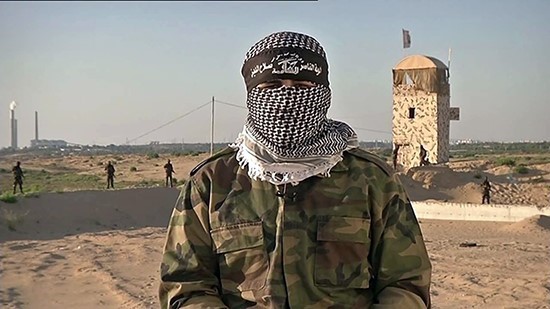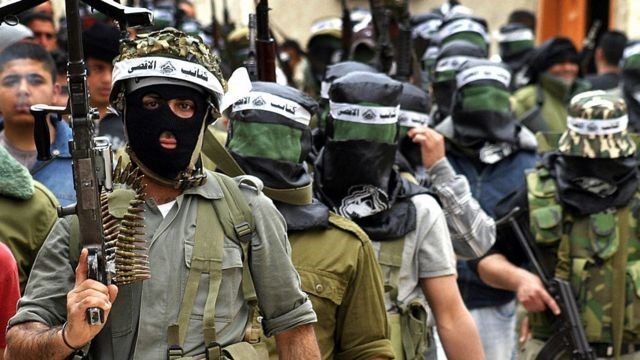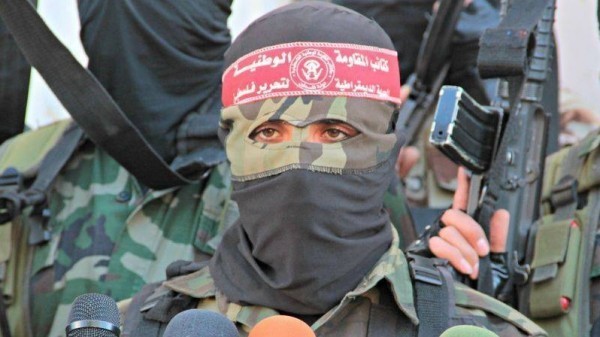OCCUPIED TERRITORIES – The October 7 operation represented a
strategically unexpected defeat for the Israeli entity. It became evident that
the Israeli political leadership, military, intelligence apparatus, and overall
system suffered a significant failure. This failure wasn't only due to the
element of surprise that shocked Hamas, but also because the military
capabilities of the prominent seven brigades on the ground, especially the
Al-Qassam Brigades, the armed wing of Hamas, appeared more advanced than Israel
knew or expected.
اضافة اعلان
The following is a brief summary of the military wings of
resistance in Gaza compiled by Al-Ghad Newspaper.
 Al-Qassam Brigades
(formerly known as Majd)
Al-Qassam Brigades
(formerly known as Majd)
Al-Qassam Brigades are currently the largest military force
in the Gaza Strip and all the Palestinian territories. It was initially
established in 1988 under the name "Majd" before being renamed
Al-Qassam Brigades a few months later. The name "Majd" remained
associated with its secret security apparatus for pursuing agents working for
Israeli intelligence. One of its founding members is Yahya Sinwar, the current
leader of Hamas in the Gaza Strip, and Israel's top wanted man for his alleged
involvement in the October 7 attacks.
The Brigades went through various stages since inception but
gained significant visibility in 1994 with the abduction attempts of Israelis
and the success of its first capture operation in the West Bank of the soldier
Nachshon Waxman, who was later killed by Israeli forces along with other
captives in a military operation near a village between Ramallah and Jerusalem.
Al-Qassam gained much fame for carrying out suicide
operations inside the Israeli entity in the early 1990s. Yahya Ayyash, one of
its prominent leaders in the West Bank, became a symbol of the movement after
Israel failed to assassinate or arrest him. He was nicknamed "The
Engineer" until his assassination in Gaza in 1996.
The Brigades continued their explosive operations during the
Second Intifada, then executed the capture of soldier Gilad Shalit in 2006.
They succeeded in holding him for many years, forcing Israel to negotiate a
deal in 2011, leading to the release of 1,027 prisoners.
In 2007, Al-Qassam imposed its military control over the
Gaza Strip following clashes with the Palestinian Authority's security forces
and decisively won its battle with the Authority in a few hours.
With around 30,000 fighters, Al-Qassam continually tested
launching rockets at Israel during the Intifada years. These rockets were
initially described by Palestinian officials as "futile," but they
surprised Israel at the beginning of 2009 with the launch of Grad rockets
reaching about 50 km.
In later years, Al-Qassam developed its strength, built
public military sites, organized itself hierarchically, and recruited thousands
of fighters. It is estimated to have around 30,000 fighters, distributed among
elite forces, regional brigades, and special units for tunnels, military
manufacturing, and intelligence.
Al-Qassam possesses defensive and offensive tunnels that
greatly troubled the Israeli military system. During the 2014 war, it used
these tunnels extensively, managing to hide two Israeli soldiers it captured in
the Tuffah neighborhood east of Gaza City and Rafah in the south. Their fate
remains unknown to this day.
For the first time in 2012, it targeted the city of Tel Aviv
with an Iranian-made Fajr missile in response to the assassination of its
prominent leader Ahmed Al-Jabari. Al-Qassam then developed drones and dozens of
missiles that surprised Israel in subsequent rounds of battles and wars, such
as in the 2014 war and the 2021 "Sword of Jerusalem" battle that
began with the firing of several rockets at Jerusalem. The same scenario is
occurring in the current war.
Prominent leaders killed by Israel include Yahya Ayyash,
Imad Akel, Salah Shahadeh, Fawzi Abu Al-Qar'a, Ahmed Al-Jabari, Raed Al-Attar,
and Ahmed Al-Ghandour. Meanwhile, Mohammed Deif, the overall commander of
Al-Qassam and the number one wanted man for over 30 years, has survived a
series of failed assassination attempts.
 Al-Quds Brigades
(Force No. 2)
Al-Quds Brigades
(Force No. 2)
Al-Quds Brigades, the military wing of the Islamic Jihad
Movement, is the second largest military force in Palestinian territories. It
was established at the beginning of the Second Intifada, which erupted at the
end of 2000. Initially known as the "Qassam Brigades," it carried out
a series of attacks in Israeli cities, the West Bank, and Gaza during that
period, similar to the actions taken during the Second Intifada.
Hundreds of its leaders and members received training in
Iran and Syria during the late 1980s and early 1990s. They returned to Gaza,
manufacturing rockets and drones, but their impact and capabilities are
considered lower compared to the Al-Qassam Brigades.
The approximate number of Al-Quds Brigades fighters is
around 11,000, possessing light and medium weapons, as well as thousands of
medium-range rockets and dozens of long-range rockets reaching Tel Aviv and
Jerusalem. However, their rockets lack the size and impact of those possessed
by Al-Qassam, and they do not have a large tunnel system like Al-Qassam.
Despite these differences, Al-Quds Brigades have posed a
clear challenge to the Israeli system for years, especially during escalations
in Gaza over the past five years, even when Hamas refrained from participating.
Throughout the years, Israel has assassinated many Al-Quds
Brigades leaders in Gaza and the West Bank, including prominent figures such as
Moqed Hameed, Basheer Dabash, Aziz Al-Shami, Khaled Duhduh, Majid Al-Harazin,
Baha Abu Al-Ata, and Khaled Mansour, among many others.
In recent years, the movement gained prominence in the West
Bank through the "Jenin Brigade," one of the significant military
formations in the northern West Bank led by Al-Quds Brigades. They carried out
a series of armed attacks, with the latest leader, Mohammad Al-Zabidi, being
assassinated days ago.
 Nasser Salah al-Din
Brigades
Nasser Salah al-Din
Brigades
The armed wing of the Popular Resistance Committees in
Palestine was founded by Jamal Abu Samhadana, who was assassinated in 2006, at
the beginning of the Second Intifada in 2000. It is currently considered the
third force, with approximately 5,000 fighters and dozens of homemade rockets.
Receiving support from Hezbollah and the Islamic Jihad
Movement, it participated in several operations during the Second Intifada,
such as invading settlements in Gaza before the withdrawal. It received
significant support during its early years but declined in influence after
Palestinian President Mahmoud Abbas officially dissolved it in 2007.
Some of its members reappeared recently in Jenin and Nablus,
and some were assassinated.
 Martyrs of al-Aqsa
Brigades
Martyrs of al-Aqsa
Brigades
Martyrs of al-Aqsa Brigades, the military wing of Fatah, is
now the fourth force, having initially been the first military force at the
beginning of the al-Aqsa Intifada. It carried out significant attacks against
Israelis, including inside Israeli cities.
With various military formations, it currently comprises
around 2,000 fighters with light and medium weapons and dozens of locally made
rockets with a range of around 16 km from the Gaza border. Although it has lost
some influence over the years, it gained prominence through the killing of
former Israeli Tourism Minister Rehavam Ze'evi in 2001 in response to the
assassination of its general secretary.
 Abu Ali Mustafa
Brigades
Abu Ali Mustafa
Brigades
The military wing of the Popular Front for the Liberation of
Palestine (PFLP) was established in 2001 after the assassination of the PFLP's
General Secretary, Abu Ali Mustafa. It is currently the fifth force, comprising
hundreds of fighters in Gaza and the West Bank, possessing light and medium
weapons and locally made rockets.
Israel assassinated many of its leaders, such as Kamal
Nairab and Zuhair Al-Qaisi, who succeeded Abu Samhadana in leading the
Committees.

National Resistance
Brigades
The military wing of the Democratic Front for the Liberation
of Palestine (DFLP) operates under different names before adopting its current
name. It is currently considered the sixth force, consisting of hundreds of
fighters with light and medium weapons and locally made rockets.
It carried out a series of attacks during the years of
Palestinian struggle and the Second Intifada, killing many Israelis. However,
its presence significantly diminished over the years after President Abbas
officially dissolved it in 2007.
 Mujahideen Brigades
Mujahideen Brigades
The Mujahideen Brigades is a military group stemming from
Fatah before declaring complete separation from it. It receives funding from
Hezbollah and the Islamic Jihad Movement.
Comprising hundreds of fighters, it possesses light and
medium weapons and rockets that reach Ashkelon and Sderot. It executed a series
of attacks and has killed some of its leaders since the beginning of the Second
Intifada.
Read more Region and World
Jordan News



